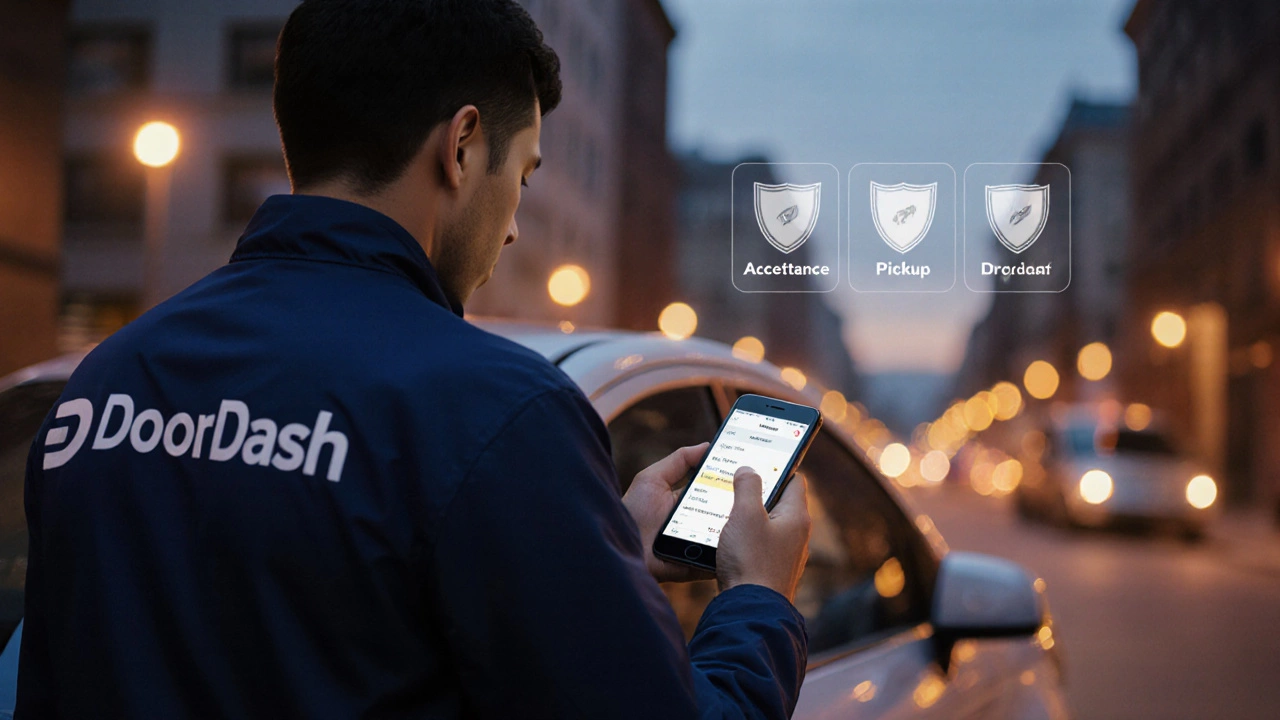DoorDash Driver Accident: Insurance Coverage & What to Do
Learn what insurance covers a DoorDash driver after a crash, how personal policies interact, steps to file a claim, and tips to avoid common pitfalls.
When dealing with DoorDash insurance policy, the coverage plan that protects DoorDash couriers while they pick up and drop off orders. Also called DD driver insurance, it aims to cover accidents, cargo loss, and legal liabilities. The rise of the gig economy, a labor market built on short‑term, on‑demand work forced food‑delivery apps to rethink driver protection. That’s why the DoorDash insurance policy bundles a basic liability coverage, pay‑out for third‑party injury or property damage with optional add‑ons like personal injury protection. In practice, the policy works hand‑in‑hand with your regular vehicle insurance, the mandatory auto policy required by law to fill gaps that standard policies ignore for on‑demand deliveries.
Understanding how the pieces fit together saves you time and money. First, the policy’s core liability tier kicks in after your personal auto insurer’s limits are exhausted – a classic “excess” arrangement that many drivers overlook. Second, optional crash insurance adds a set amount per incident, covering repair costs even when you’re at fault. Third, for high‑value orders, the cargo loss endorsement reimburses stolen or damaged meals, which standard auto policies typically exclude. Finally, the claim process expects a few key documents: a police report, photos of the damage, and a copy of your ride history. Having those ready speeds up payouts and reduces disputes.
If you’re new to DoorDash, start by checking whether your state mandates personal injury protection; if not, the platform’s add‑on can be a lifesaver. Compare the per‑incident limits with your own auto policy – you don’t want a coverage gap that leaves you paying out‑of‑pocket for a major accident. Also, keep an eye on the premium cost versus expected earnings; many drivers find that the basic tier is enough for city rides, while long‑haul deliveries benefit from the full package. Remember, the gig economy’s flexibility also means you can switch between platforms, so a portable insurance rider that follows you across apps can be worth the extra fee.
Cost structures differ by state. In California, the base tier runs about $9 per week, while in Texas it’s $7. Some drivers bundle the insurance with their phone plan to snag a discount. When you log into the DoorDash driver app, the insurance dashboard lets you toggle coverage on or off for each shift – a feature that came after driver feedback demanded more control.
Another often‑overlooked aspect is the relationship between insurance and the platform’s driver rating. A higher rating can unlock lower premiums on optional crash insurance because the risk profile improves. Conversely, frequent low‑score incidents may trigger higher deductibles. Keeping a clean record not only pleases the algorithm but also saves you cash on coverage.
For those who ride both bike and car, the policy automatically adjusts the per‑incident limit based on the vehicle type logged in the app. Bike riders get a lower limit, reflecting the lower repair costs, while car drivers receive the full $250,000 coverage. If you switch vehicles mid‑day, the system updates in real time, ensuring you’re never left exposed.
Finally, don’t forget the tax angle. Insurance premiums paid through DoorDash are considered a business expense, which you can deduct when filing your taxes. Keep the digital receipts the app provides; they’ll make the end‑of‑year paperwork much smoother.
Below you’ll find a curated set of articles that break down each component, from liability basics to real‑world claim stories. Whether you’re hunting for cost‑cutting tips or need to understand the legal fine print, the collection will give you the practical insight to pick the right coverage and stay on the road with confidence.

Learn what insurance covers a DoorDash driver after a crash, how personal policies interact, steps to file a claim, and tips to avoid common pitfalls.